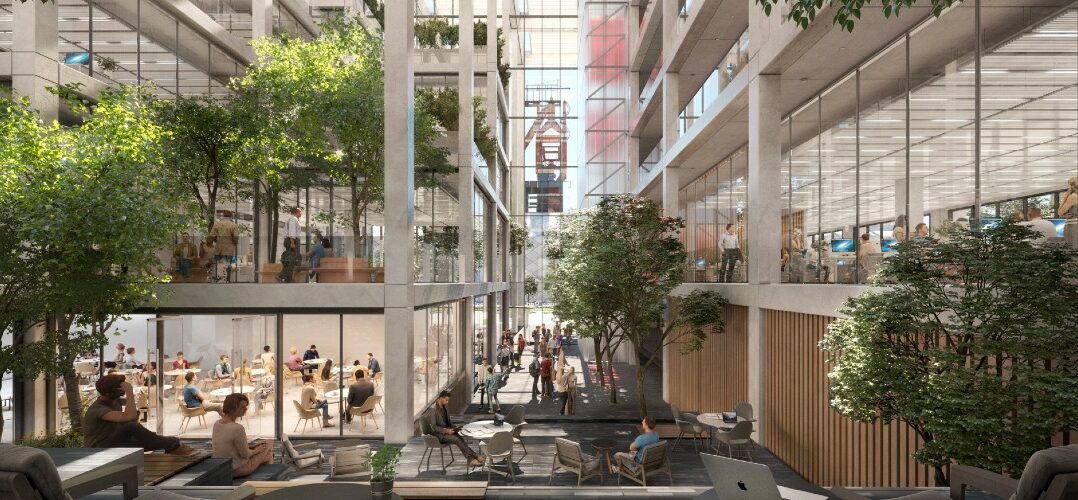Pandemics have shaped cities around the world over the centuries, and Covid-19 will be no exception. The legacy of Covid-19 has already shifted the focus onto health, hygiene, safety and onto our relationship with nature. In short, it’s all about the wellbeing of the people who use the buildings.
Looking back through history, the modern architectural movement, with its white walls and smooth surfaces, was born out of the design for sanitoriums treating tuberculosis patients, writes Beatriz Colomina in X-Ray Architecture.
The medical profession blamed the rise of TB on the dark, dank, dusty interiors of their 19th century times. In The Radiant City (1933), modernist pioneer Le Corbusier dismissed the “natural ground” as a “dispenser” of rheumatism and tuberculosis. One of his defining styles was the use of pilotis: concrete, load-bearing columns that raise buildings off the ground.
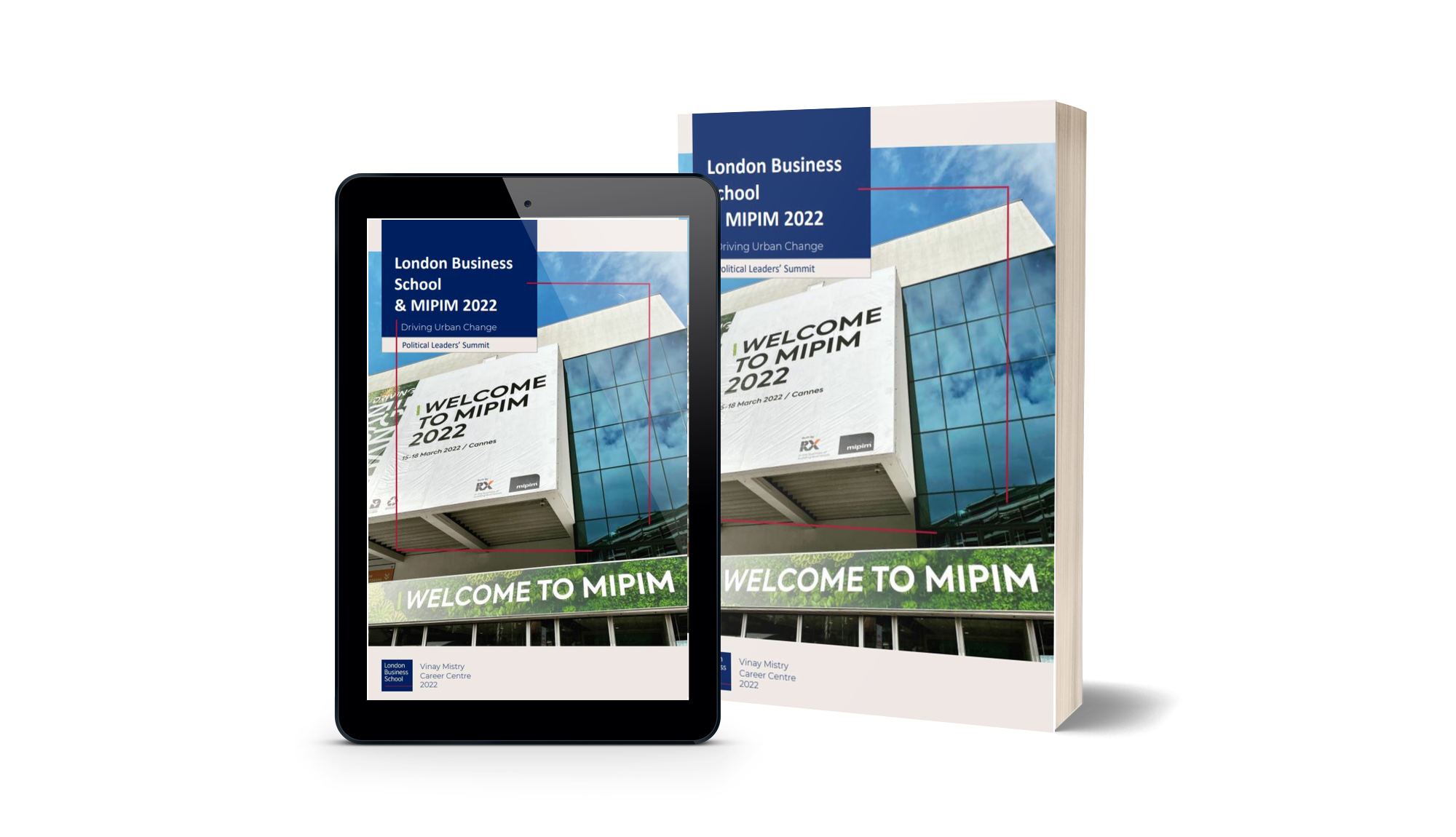
Logistics Afternoon Report
The architectural legacy of Covid-19 is as an accelerator of existing trends rather than the maker of new trends; trends now reaching and being evolved on drawing-boards around the world that much faster.
The trend towards wellbeing through architecture can be see in buildings conceived prior to Covid-19; such as the new office complex, ICÔNE, in Belval Luxembourg, where work officially started on 1 June. The building is designed by Foster + Partners together with local practice Beiler François Fristch, and BESIX RED Luxembourg as the developer.
Darron Haylock, partner at Foster + Partners, said about the 18,800m2 new office building: “The project is designed to have open, flexible workspaces that respond to the emerging models of work today.
“The atrium is a green, light-filled space that is very much the social heart of the project, providing visual connectivity and a dynamic atmosphere for both work and play. Biophilia, the green landscaping, natural ventilation and visual connectivity all promoting collaboration and healthy wellbeing.”
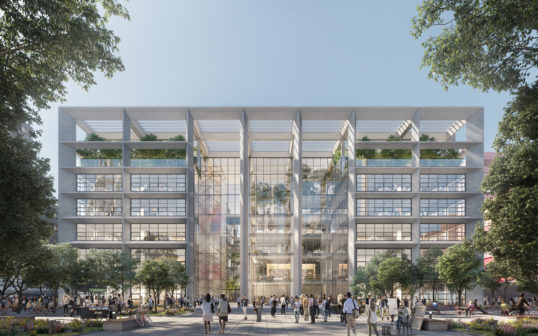
ICÔNE, a new office complex in Belval Luxembourg, which broke ground on 1 June
The question of density becomes key for design
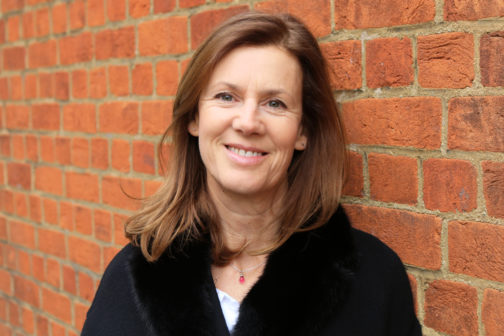
Linda Morey-Burrows of MoreySmith: “The office will be even more important in the future.”
“In some respects, the office will be even more important in the future,” Linda Morey-Burrows, principal director of design & architectural firm MoreySmith, told Monocle on Design. “It still needs to be a talent magnet. The sense of wellbeing, health and hygiene, and the facilities will be ever more important in the future.”
With social distancing in some form or other set possibly to be with us for the foreseeable future, density will remain a key issue. Workspace densities have almost doubled over the past ten years, says Morey-Burrows.
“Any environment that is enclosed, with poor air circulation and high density of people, spells trouble,” writes Erin Bromage, associate professor of biology, University of Massachusetts, Dartmouth, about our Covid times.
The lowering of densities through social distancing come at a time when last-century, factory-like rows of desks are out and the workplace is morphing into a flexible area where people meet to collaborate, co-create and to think, with spaces designed accordingly.
Centric Lab, the London-based urban research lab & consultancy, advocates designing for our biological (body) system rather than our psychological (mind) system, given that the standard deviation between people’s biological systems is very low compared with the multitude of different psychological systems.
A building also needs to be thought of as part of an interconnected urban system, says Josh Artus, co-founder of Centric Lab. “You can’t have a healthy building in a sick city,” he told MIPIM World Blog earlier this month.
… as architects & designers look towards new products and old materials
Science is also predicted to play a more important role in the design of new materials and products. “Like a vaccine, this may take much longer to come through as products for the market,” says Morey-Burrows, who just before Covid-19 was retrofitting a client’s workspace desktops with an anti-microbiotic work surface.
“Often natural materials can be better, safer and more hygienic than current every day materials like steel or plastic” – Linda Morey-Burrows, MoreySmith
MoreySmith is also revisiting the traditional use of natural materials. “Often natural materials can be better, safer and more hygienic than current every day materials like steel or plastic,” Morey-Burrows said, recalling that butchers’ blocks were traditionally made from untreated timber for hygiene reasons.
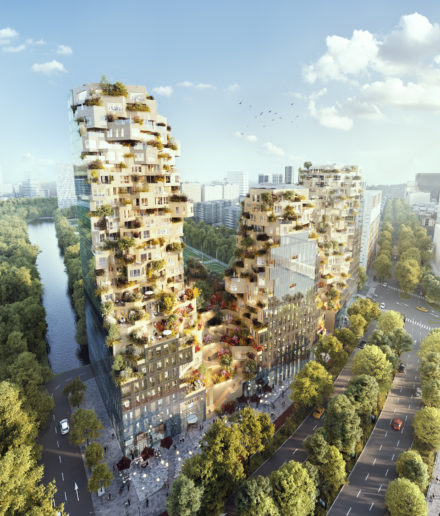
Internationally renowned landscape architect Piet Oudolf designed the landscaping at the Valley, a 75,000 m2 mixed-use scheme in the Zuidas Business District of Amsterdam where the architect is MVRDV and the developer EDGE Technologies, an OVG real estate company. The scheme is due to open in 2021 (Vero Visuals/MVRDV)
Wellbeing architecture and air quality
“We have always looked towards the outside, towards the environment, looking at how we can reduce the energy usage of buildings,” said Arjan Dinsté of UNStudio on an ArchDaily x LifeCycles webinar on the future of cities. “Suddenly we are realising that our bodies are not built for sitting inside, and that our buildings are in essence unhealthy environments.”
UNStudios founder, Ben van Berkel explained to a TEDxErasmus University audience back in 2016 how “architecture has an enormous effect on people”.
“Architecture benefits our health on three levels: on the physical, social and psychological levels” – Ben van Berkel, UNStudio
Van Berkel has since founded UNSense, an architectural tech company designing and integrating humancentric tech solutions for the built environment. A recent design has been for RESET stress-reduction pods.
“Architecture benefits our health on three levels: on the physical, social and psychological levels,” said Van Berkel, who held the Kenzo Tange Visiting Professor’s Chair at Harvard between 2011 and 2018, where he led a studio on health and architecture.
For UNStudio, indoor air quality is key.
“We are indoors for 80% of the time, and we forget how bad our indoor air is. Often bacteria move from one person to another, as we circulate the air totally in the wrong way in buildings,” said Van Berkel.
Instead, UNStudio has been using a technique from hospital operating rooms, with air rising vertically up through vents in the floor and out through the ceiling.
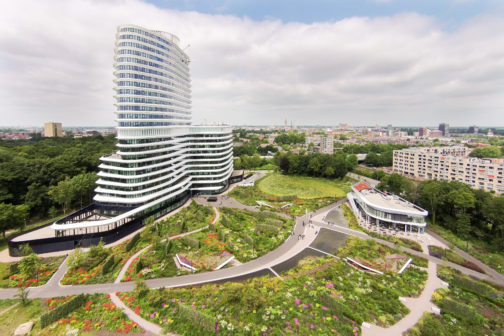
When it introduced this technique at the Education Executive Agency & Tax Office building in Groningen – where the fresh air comes in through vertical fins in the middle of the building – this led to a 20% reduction in the number of sick days taken. The incoming wind was not only used for clean air, but also to produce energy.
“Transparency creates communication, light and use of space” – Ben van Berkel
Spaces also need to be transparent, says Van Berkel. “We know that safety is the highest stress level for many people in buildings … transparency creates communication, light and use of space,” he said, referring to the UNStudio design for the Mercedes-Benz Museum in Germany.
Digital technology offers tools for wellbeing
Embedded in all building design is technology – both to enable the design and to manage the building. Technology needs to be driven from the human side, says Arjan Dinsté of UNStudio. “Digital technology is taking us beyond our current understanding of what a building is,” he adds.
“If people don’t have choices, they are not happy” – Arjan Dinsté, UNStudio
Rather than a gadget, “technology is as an interactive tool providing options and possibilities; with the individual choosing according to the work or the activity they are doing. If people don’t have choices, they are not happy.”
Brainport Smart District – a new wellbeing district for Helmond
Among UNStudio’s current projects is the urban vision for Brainport Smart District – a “flexible grid that will develop around the demands of its inhabitants”, with wellbeing at its core.
Over the next ten years, the district in Helmond, near Eindhoven, will see the building of 1,500 new homes and 12 hectares of business premises. It will become a “living lab”, guided and planned by its users.
“The ambition is to achieve a sustainable, circular and socially cohesive neighbourhood that enjoys joint energy generation, food production, water management, joint digital data management and revolutionary transport systems,” says UNStudio.
“The productive urban environment and landscape will generate a local economy that is specifically ‘Made in BSD’.”
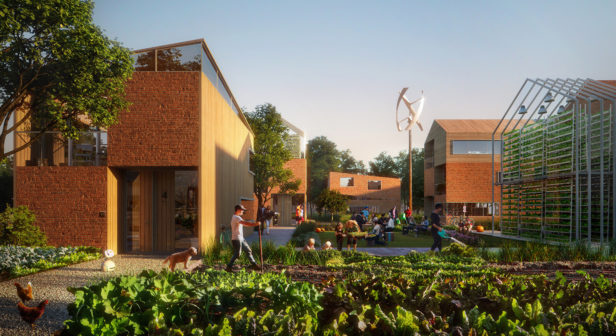
Fælledby neighbourhood in Copenhagen – all wooden buildings
Another new neighbourhood being developed with wellbeing as a focus is Fælledby in Copenhagen, which looks to balance city and nature.
« It is more crucial than ever that the relationship between city and nature is ‘both/and,’ not ‘either/or’, » says Signe Kongebro, head of sustainability research at Henning Larsen.
“Our intrinsic need for the outdoors, daylight and nature are nothing less than basic individual rights” – Franck Fdida, Henning Larsen
And as her colleague, lead design architect Franck Fdida, writes: “As our access to the outdoors, daylight and nature has dwindled, our intrinsic need for all these things has become painfully clear … they are nothing less than basic individual rights.”
The 219,000m2 of buildings on the 181,000m2 plot of land, with Copenhagen Municipality as client, are designed to be built entirely of wood, chosen in part because of its ability to actively removing CO2 as the trees grow.
Fælledby is being developed in phases. It will grows outwards from three distinct ‘cores’ that frame the neighbourhood. “This diffuse approach will maximize access to nature for residents and will allow the landscape to be organically integrated in the site,” says Henning Larsen.
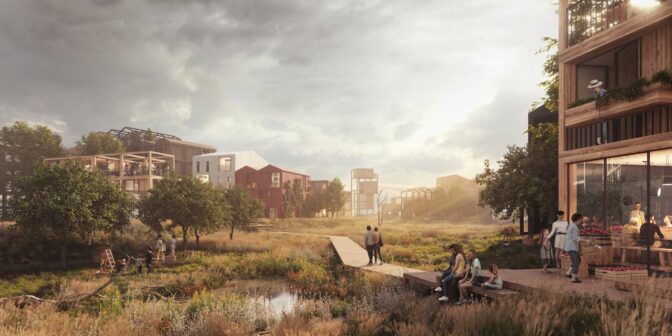
Presumably there will be a few dogs living among the Fælledby community (above). People who live in pet-friendly buildings have higher levels of psychological wellbeing, according to anecdotal evidence reported in The New York Times. And animal architecture? Yes, it does exist.
Top Image: ICÔNE, a new office complex in Belval Luxembourg
